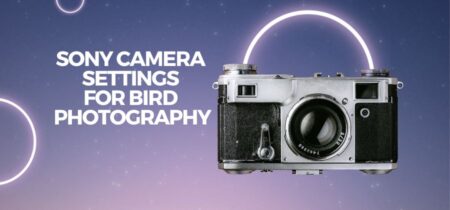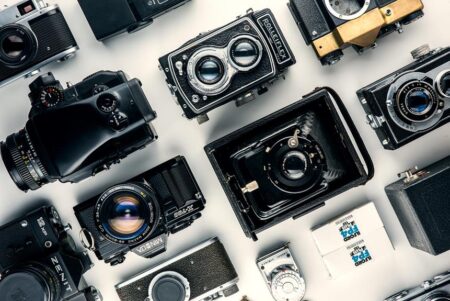For YouTube videos and other video productions, the Sony ZV-1 is the ideal camera due to its excellent image quality, low price, and ease of use, Because of its compact and portable design, the Sony ZV1 makes an excellent digital camera for taking pictures. Although these features are some of its greatest strengths, they can also be its greatest weaknesses, especially when it comes to capturing video footage with a camera so lightweight.
As with YouTube’s famous video cameras, many people call in to discuss new cameras and how to get the best images.
We’re going to take a look at the best Gimbal for Sony ZV1 in this blog.
What is a gimbal?
The gimbal is a device that is made up of rings or brackets that pivot in one direction to hold the device steady. This device is very useful for videographers who wish to shoot handheld and produce steady footage.
Gimbals are supports on which you mount your camera. The brackets surrounding your camera rotate so that the inner bracket remains level.
If you’re using a gimbal, you’ll almost feel like your camera is floating on air. The stabilizer will detect your deliberate movements (such as a wide pan) and ignore the non-deliberate shake that occurs while shooting handheld.
How does a gimbal work with cameras?
A gimbal can be designed to work with any camera. For example, DJI makes the OSMO Mobile 3 for smartphones. There are many such models available.
In addition to gimbals for DSLRs and mirrorless cameras, there are also gimbals for action cameras and cinematic cameras.
This guide covers the best gimbals for Sony ZV1. In future guides, we’ll cover gimbals for other devices.
What are the best gimbal stabilizers for Sony ZV1?
- Zhiyun Crane V2 – BONUS PICK
- DJI RS 2-3-Axis Gimbal Stabilizer
- ZHIYUN Crane 2S-Professional Gimbal Stabilizer for Sony zv1
- Zhiyun WEEBILL S– Long Runtime / OLED Display
- FeiyuTech G6 Max– budget pick
- MOZA Air 2– best value
Zhiyun Crane V2 – BONUS PICK
Zhiyun Crane V2
Bonus pick
- Durable design
- impressive stabilization
- solid battery life
specification
- 3.9 lb. compact cameras.
- Support for long lenses that attaches to the lens
- A 3×32 MCU runs at 4000Hz in parallel.
- Joystick with four-way stepless movement
- Thumbscrew-based attachment of a camera to a tool-less device
- Bottom mounting hole is 1/4″-20 threaded
- Wireless control of iOS/Android apps is possible thanks to built-in Bluetooth.
- Battery life of 12 hours when using the included batteries.
Battery Life
A pair of Zhiyun 26500 Li-ion batteries with a capacity of 3600 mAh are included in the Crane V2 gimbal stabilizer, and it comes with a charger that can easily charge them within an hour or two. In accordance with the manufacturer’s claim, the batteries on the Zhiyun Crane V2 can last approximately 10 to 12 hours, which is considerably longer than the Crane V1 batteries. It’s important to note, however, that your battery life may vary depending on your usage.
Zhiyun Crane V2- Performance
This gimbal stabilizer has a 32-bit x 3-high-speed MCU that can process at up to 4000MHz on its own Inertial Measurement Unit, giving us confidence in its performance.
Featuring unprecedented motion sensitivity, precise control, and high-quality images, Crane’s hardware allows for stunning shots. With Zhiyun’s Intune Algorithms, the Crane can adjust to sudden twists precisely. The motors are barely noticeable as they stabilize video footage. We have no complaints about this gimbal.
With the Crane V2, you can control wobbles and shakes in real-world situations. It almost looks like you are gliding through the air while running, walking, or driving. The gimbal stabilizes your shots and is able to be used to capture great panning shots. The results are similar to those you would get with a tripod.
The gimbal’s head will follow your route if you twist your wrists, but if you shoot for long periods of time, your hands will get tired, and the gimbal may feel heavy.
App Controls
In addition to being available for iOS and Android devices, Zhiyun Assistant is also a smartphone application. By using this app, you will be able to easily connect your Zhiyun Crane to your smartphone through Bluetooth, which means you can control the gimbal completely, without actually touching it.
In the dashboard, your gimbal’s battery percentage will be displayed once you open the app. You will also be able to calibrate, control, and adjust your stabilizer settings in stabilizer settings. In the stabilizer settings, you’ll be able to adjust the Control dead zone, following rate, control rate, and Degree of smoothness. For the gimbal’s pitch, roll, and pan axis, each of these settings can be individually adjusted. When you click on Calibration, the app will help you fix any deviations in the gimbal’s 3-axis and horizontal direction.
When you click on Control in the dashboard, you will be able to control the actual gimbal with a virtual joystick without touching the actual buttons. You will be able to switch between the three modes of the gimbal in this section, namely Follow, Lock, and Full. Based on the mode you’ve selected, you can adjust the Roll, Pitch, and Pan axes with this virtual joystick.
There is also a Restore button, which can be tapped to easily restore the gimbal to its original position, so there’s no need to worry about it. The app has a mediocre user interface and controls that are easy to use, even for beginners. Even so, the app feels a little outdated, and people seeking advanced features might be a little disappointed.
The Good
This is a much more affordable option than the DJI Ronin M or MX because of its compact, durable design, impressive stabilization, and solid battery life.
The Bad
With DSLRs, lenses can weigh up to 1.8 kg. They are not suitable for prolonged, continuous use by one hand.
DJI RS 2-3-Axis Gimbal Stabilizer
Dji RS 2
3-Axis Gimbal Stabilizer
- It has an improved LCD screen
- It is ergonomically designed.
specifications
- 2.4GHz (2.4 – 2.483 GHz) is the wireless frequency
- Bluetooth 5.0 wireless protocol
- 1950 mAh battery capacity
- The battery has a capacity of 30.3 watt-hours
- 12 hours of battery life
- Lithium Polymer (LiPo) Battery Chemistry
Small & Lightweight
It was easier for me to maintain stamina over a long day of shooting 4-6 hours at a time thanks to its smaller size and lighter weight, as I mentioned previously. The difference in size and weight may not seem significant on paper, but the reduced payload was definitely noticeable over the course of a full day of shooting.
Supports a Decent Payload
For the majority of our testing, the team used a Canon EOS R or R6 with the 24-105mm or 14mm lens. According to the manufacturer, the gimbal can hold up to 10lbs for up to 12 hours. The combination of this camera and the 24-105mm doesn’t come close to maxing out the motors, but they didn’t give any lag or resistance/strain no matter what we put on them. Ronin RS 2 seems capable of handling any DSLR or mirrorless combo unless you’re getting into big cinema rigs.
Setup Is Easy
It was easy to set up out of the box. We used the focus motor and liked how it could be controlled by the scroll wheel. If I had connected another scroll wheel, I could have controlled the motor and a setting in the camera with one scroll wheel. Especially useful on long shoots and run-and-gun situations.
A built-in screen allows you to control whatever you want with the wheel.
Motor Locks
I also liked the motor locks because they made it a lot easier to balance the gimbal, since I only had to worry about one axis at a time, which the SC has, but the original S doesn’t. As well as making the initial setup so much simpler, this feature allows quick/short storage without disassembling the gimbal. Locking the arms makes it, so the kit won’t move when it’s sitting down between shots. Just be sure to turn off the system before engaging the locks.
Fully Fleshed out Features
Although we didn’t use RavenEye for our shoots, I set it up and can certainly see its potential on production. The force control was pretty responsive from a mobile device, with minimal latency.
As with previous generations of DJI gimbals, everything else was familiar, fast, and easy to use! It was like slipping on a custom-fitted pair of gloves!
The Good
It is smaller and lighter than previous models, it supports more weight, it is easy to set up, it has motor locks that make balancing easy, you can adjust the speed, it has an improved LCD screen, and it is ergonomically designed.
The Bad
There are still a lot of wires, and the battery life wasn’t as good as I expected.
ZHIYUN Crane 2S-Professional Gimbal Stabilizer for sony zv1
ZHIYUN Crane 2S
Professional Gimbal Stabilizer for Sony zv1
- The price is fair
- The battery lasts a long time
- The design is solid
specifications
Pan range: 360°
Tilt range: -91° to +155°
Roll range: -57.5° to +237.5°
Rechargeable batteries: 3x 2600mAh
Weight: 1.88g (without tripod and batteries)
Rock solid design
As compared to its predecessor, the Zhiyun Crane 2S is capable of handling payloads of up to 3.2kg (7 pounds) and incorporates the Instune Algorithm System, which Zhiyun says makes motor torque 50% stronger and noise reduction 20% better.
Those numbers aren’t just fluff, are they? Is the gimbal’s body a sign of good design? The body of the gimbal appears sturdy, solid, and well-built. It is compatible with all DSLR and mirrorless cameras, according to Zhiyun, so you don’t have to worry about whether it will fit (as long as it is lighter than the maximum weight).
Zhiyun Crane 2S’ carbon fiber finish gives it a good feel and its grip is very easy to hold. We also appreciated the safety lock that keeps the camera locked in, so we didn’t have to worry about our equipment hitting the gimbal.
Quick Release Plate
You can quickly release the camera and mount it to the tripod using the quick-release plate.
Smooth Stabilization
The Zhiyun Crane 2S has a pretty good stabilization system; there’s an auto-tune feature that keeps the gimbal balanced.
Despite its lower price, the Zhiyun Crane 2S is still a great camera stabilizer. It has well-balanced three axes and can be easily calibrated. For better barrel shots, you can also switch to “Vortex mode” on the Zhiyun Crane 2S.
Oled Indicator Screen
OLED indicator screens are not strong in and of themselves, but rather they are strong because of their utility. Six things can be seen on the OLED indicator screen: control mode, battery level of the camera and crane, EV, AV, and ISO. Having all of this information easily accessible when shooting saves a great deal of time.
A TACTILE FOCUS WHEEL/A MECHANICAL AND DIGITAL FOLLOWING FOCUS
Zhiyun Crane 2S follow focus works very well in our tests and has both mechanical and digital focus options.
Full range control (360°)
360° full range control lets you shoot from any angle.
Long battery life
A Zhiyun Crane 2S battery lasts up to 18 hours of continuous use, according to Zhiyun. We used the Crane 2S intermittently for a period of about 3 days without needing to recharge.
Zhiyun Crane 2S Accessories
There are some accessories included with the Zhiyun Crane 2S, such as camera control cables, an aluminum alloy tripod, an EVA carrying bag, and a Manfrotto plate with quick release.
The Good
The price is fair, the battery lasts a long time, and the design is solid
The Bad
The battery Location is not in the right place and the Setup is not very easy and, Somewhat Niche.
Zhiyun WEEBILL S– Long Runtime / OLED Display
Zhiyun WEEBILL S
Long Runtime / OLED Display
- Compact cameras
- controls on the device itself.
Features
In the Weebill-S, the pan and yaw motors are located at the base above the handle, to control the left and right panning and yawing movements of the mounted camera.
Rotation movement is controlled by the roll motor, while tilt movement is controlled by the tilt motor.
Both accidental and intentional movements can be controlled by these motors using the joystick at the handle or the chosen mode of the gimbal.
Zhiyun Weebill-S Gimbal Modes
- With Pan Follow mode (PF), the roll and tilt motors lock, and the camera rotates horizontally while panning. By pushing the joystick left or right, the tilt angle can be controlled and the pan angle can be controlled.
- The roll axis motor is locked in the following mode. The tilt axis and pan axis motors are moved by your handle rotation. Push or pull the joystick to change the roll angle.
- You can change the tilt angle by moving the joystick left or right. To switch horizontal orientation, push up/down the joystick. In lock mode (L), all three motor angles are locked. The camera will not move and the handle will not rotate.
- In point of view mode (POV), the motors move when the handle is turned, so that the camera tracks the movement of the handle.
- You can create footage that spins by pushing the joystick left or right in Vortex mode (V). The tilt axis motor rotates up by 90 degrees, and the tilt, roll, and pan motors follow your hand.
- This mode is great for creating interesting transitions or following fast movements since the roll motor locks and the tilt/pan motor follows the handle’s rotation.
Gimbal’s body/handle has a small screen that displays the selected mode.
Selfie mode
Taking selfie videos is as easy as clicking the button on the handle three times. This feature works with cameras with flip-out LCD screens.
Plate Quick Release
The popular two-in-one quick-release plates (Manfrotto/Arca-Swiss) have also been used by Zhiyun, which is useful when you want to take your camera off the Gimbal and shoot and then rebalance it without having to take it off again.
A riser plate is available if you want to raise your camera above the quick-release plate.
Physical Controls
There is a lot of information displayed on the screen about WEEBILL LAB and the settings of your camera, but you don’t have access to it while using the Gimbal. You can adjust compatible camera settings, like ISO and shutter speed, using the scroll wheels.
In addition to the switch for turning the WEEBILL Lab on and off, there is also a switch for enabling Pan Following Mode and Locking Mode.
When the trigger button is pressed, the mode changes depending on how many times it is pressed.
The Good
There is support for DSLRs and Mirrorless cameras, compact cameras, and controls on the device itself.
The Bad
The stiff balance needs to be adjusted, the instructions are poor, and the buttons are arranged in a confusing manner.
FeiyuTech G6 Max– budget pick
FeiyuTech G6 Max
Budget pick
- Large OLED screen
- Axis lock plus new lock system
- updated multifunction knob

specifications
- It weighs only 1.5 pounds and has a payload of 2.6 pounds
- Camera attachment plate with sliding quick release
- Adapters for smartphones and action cameras included
- Displays using OLEDs
- 280° tilt, 330° roll, and 360° pan
Design
Feiyu Tech seems to be dedicated to releasing camera gimbals that are light in weight. The Feiyu G6 Max gimbal has 665g of weight and is small, and it is as large as the Feiyu G6 Plus gimbal. As well as being lightweight and small, the G6 Max has good metal construction, which makes it stable and firm.
It is a three-axis camera gimbal with three-axis position locks, which play an important role in balancing.
This oval-shaped handle has two pieces of silicone rubber embedded in it, which makes it comfortable to hold.
On the front side of the stick, there are a display, a joystick, a shutter button, and a function button. The display on G6 Max is larger than on G6 Plus.
There are also two power buttons, a camera mode button, a Type-C port, and a trigger button on the back.
G6 Max is a portable gimbal, and it can fit perfectly into your bag. But it is difficult to fit into a pocket on your clothing.
Performance
As far as I can tell, it is easy to balance the G6 Max. However, when turning on the gimbal after balancing, the G6 Max vibrates occasionally.
You can switch between five modes of the G6 Max, including pan mode, follow mode, all follow mode, fast follow mode, and selfie mode. Switching between modes is easy. Just tap the function button or trigger button. Additionally, the transition between these modes is smooth and steady.
The knob can support more functions after updating except tilting, like zooming, so most operations, like focusing and panning, can be handled through the buttons, joystick and knob.
With the Feiyu ON App, you can control the gimbal and camera directly from the camera or smartphone via Bluetooth and Wi-Fi.
In terms of stability, the Feiyu G6 Max is above average, performing well when walking. However, the frame has a small vibration when running or doing other intensive movements.
I think the G6 Max feels lighter than most of the camera gimbals sold on the market, despite its higher net weight (665g) than the G6 Plus (663g).
Battery
This Feiyu G6 Max gimbal can last for around nine hours, which is great for outdoor shooting. By the way, the G6 Max has a built-in battery, which is more convenient than an external one.
The Good
THE Large OLED screen is available, and the Axis lock plus new lock system updated multifunction knob.
The Bad
This gimbal is horrible for smartphones, also it’s not for long-lasting use, it stops working after a few days in some cases.
MOZA Air 2– best value
Best Value
- It has a compact design and a wide range of compatibility, and also it is super easy to set up a second time.
Power Supply System for Moza Spark
With optional Moza adapter cables, the Air 2 also has three output ports for powering the camera and accessories. The Air 2 comes with an input port for powering the gimbal. Moza Spark’s power supply system consists of a Battery Management System (BMS), which optimizes the power consumption of the Moza Air 2 and accessories. Outlet ports can be used to power electronic follow focus, LED lights, or monitors. The Moza Air 2 increases battery life by using BMS.
Inputs and outputs of the power supply are as follows:
- Input voltage of 16 VDC, 5.5mm
- Output voltage: 7.8 VDC, 2.0mm
- 5.5mm 12 VDC output
- Multi CAN 7.8 VDC output
There were no adapter cables included in the kit, so I couldn’t test this power system.
Build Quality
Despite its weight and solid feeling in the hand, the Moza Air 2 has decent build quality. It does not feel as cheaply made as previous Moza gimbals I have seen. There are smooth adjustments on all axes, and the latches are all secure. This gimbal has a single lock for the roll axis, but no locks for the pan and tilt axis.
The joystick is well-made and placed in an easy-to-reach position. I like the style of the joystick that Gudsen is using on the Moza Air 2 more than the traditional dial type you see on a lot of other gimbals. You can move the gimbal at different speeds and with a more tactile feel with the joystick.
It was a little difficult to remove and replace the battery compartment cover.
OLED Screen
The Moza Air 2 has an OLED screen that’s bright and easy to see outdoors. The information is displayed in a basic manner, but it’s the key information that you need.
Roto Wheel
In the menu, the Roto Wheel on the side of the gimbal can be configured to perform a variety of functions.
You can use it to control the optional follow focus, zoom, gimbal roll, or assign the F1 or F2 function buttons to it. If you use Nikon lenses with the optional follow focus feature, you can also reverse the wheel’s direction and change the sensitivity speed.
No inbuilt stand
Although the Moza Air 2 comes with a stand, it’s still necessary to attach it to the handle. While the stand works well, the caveat is that it does make the gimbal handle incredibly long. I would have preferred to have it built into the handle, but that’s just my opinion. Having a long handle makes getting underslung or briefcase-style shots much easier, and your back will thank you for it.
It does seem a bit unstable if you run heavier payloads on the stand. I would have preferred a more sturdy stand for a gimbal of this size, especially if you have it on the ground in the wind or if you are using the app to move it remotely.
The Good
It has a compact design and a wide range of compatibility, and also it is super easy to set up a second time.
The bad
The manual instructions are not so helpful.
Features to be considered while buying the best gimbal
1. Budget
First-time gimbal shoppers may prioritize price. This is especially true if you’re just getting started as a videographer or exploring it as a hobby. After all, you wouldn’t want to spend too much if you’re still a beginner.
The price of some smartphone gimbals is under $40, while the price of premium models can go up to $120. The price of gimbals with built-in cameras could go up to $350. If you’re looking for a gimbal to support your DSLR or mirrorless camera, be prepared to pay up to $500.
Check out reviews before you decide based on your budget to see if it’s a good option. It’s also important to consider your needs—are you going to use it for dynamic shots or just for B-roll? If you need it for the former, then you might want to consider investing in a three-axis gimbal.
2. Compatibility
In particular, some gimbals that only work with specific camera models receive bad reviews because of compatibility. So, before adding that gimbal to your cart, make sure it works with your gear.
Here are some tips on compatibility.
Smartphone or Camera Model
In some cases, the manufacturer may not have yet developed an app for the latest version of iOS, so the gimbal will not work. Although most gimbals are compatible with most devices, it’s a good idea to check with the manufacturer first. Alternatively, the gimbal itself is not powerful enough to stabilize smartphones with wide and thick sides, such as Samsung Z Fold 3 or LG Wing 5.
Camera Type
Choosing a gimbal based on the type of camera it is designed for in the future is important if you plan to expand your gear in the future. Most smartphone gimbals work only with smartphones. It is possible to attach an action camera to some gimbals, but some may not.
There are also camera gimbals, which can support DSLRs, action cameras, and smartphones. However, these devices are much more expensive than even the most expensive smartphone gimbals.
Payload Capacity
Adding accessories to your smartphones, like a case or an add-on lens, should make you consider more robust gimbals. Some older or more affordable models may have weight limitations, making them less stable.
Camera-specific gimbals, for example, may be designed for a mirrorless camera, so it may not function properly when used with a DSLR and a heavy lens.
3. Two-Axis or Three-Axis?
A two-axis gimbal stabilizes a camera’s tilting and rolling motions, whereas a three-axis gimbal stabilizes turning and panning movements as well.
You may be able to get away with using a two-axis gimbal if you plan to shoot mostly in the studio or capture inanimate objects, but if you plan to go dynamic, such as running or riding in a car, you’ll need a three-axis gimbal.
4. Type and life of batteries
This is another consideration, especially if you’re going to travel a lot or shoot all day long. It would also be helpful if your gimbal came with an
adapter to take standard AA or AAA batteries. If you are constantly traveling, you might want to carry spare batteries around with you. Since these batteries are readily available in convenience stores across the world, they are a good choice.
Ideally, you’d have a gimbal that lasts for a day or two of shooting with just two or three battery packs. That way, you don’t have to carry around extra weight just to make sure you don’t run out of power on set.
5. Connectivity
Additionally, if you’re choosing a smartphone gimbal, be sure to consider connectivity options. Since your phone or camera is sitting on the gimbal platform for stabilization, it may be disturbed if you adjust its controls.
There are some camera models that only have one or the other connection option, so you should make sure your gimbal has multiple connection options. Although most smartphones can connect via Wi-Fi and Bluetooth, there are also devices that can’t connect via Bluetooth, such as Apple smartphones.
6. Accessory Mounts
The gimbal should have mounts for on-camera lighting, microphones, and even external LCDs. That way, you will be able to shoot more conveniently, without having to ask an assistant for accessories.
There are some gimbals that have tripod mounts or built-in legs, so you can safely set it down while you shoot.
Conclusion
The right Gimbal will make filming much easier and more enjoyable. This is especially true if you own a lightweight camera like the Sony ZV1.
Sony ZV-1 is an ideal camera for YouTube vlogs and other social media sites because it provides more power and video capabilities than any other pocket camera.
In addition to being well-respected among professionals and enthusiasts, Ziyun crane-V2 is a great choice. I recommend FeiyuTech G6 Max 3Axis Handheld Gimbals for those who want to capture their adventures. From the list, any of the best gimbals for Sony ZV1 can be chosen from them.
Frequently asked questions
Does Sony zv1 have a stabilizer?
Aside from offering great image stabilization, the ZV-1 also includes HLG and S-Log2/3 support for simple color grading during post-production.
Which gimbal is best for vlogging?
- DJI OM 5. It’s the easiest-to-use gimbal we’ve tried. The DJI OM 5 feels like it’s made for everyone.
- The runner-up is the Zhiyun Smooth 5, a more robust smartphone gimbal….
- An upgrade pick would be the DJI Pocket 2. It has its own camera and gimbal
How do I stabilize my ZV-1?
Is Sony ZV-1 good for still photography?
Suitable for sports and wildlife photography, the Sony ZV-1 produces excellent image quality. In the ‘Hi’ continuous shooting mode, it can shoot at 24 frames per second, but only when it uses the electronic shutter, which can cause distortion when shooting fast-moving subjects like birds.
Is Zhiyun a good brand?
In addition to being well-built, it exudes quality. The motors are powerful, no doubt contributing to the smooth stabilization – very impressive. The battery life is excellent and you can charge your cellphone while it is attached to the gimbal.
Do gimbals fit all cameras?
Make sure your camera is compatible with the gimbal before purchasing it. You should also look for any important camera ports that will be covered up by the gimbal’s design if you use accessories like external batteries or microphones. A great gimbal has a lot of features.
Are gimbals good for photos?
The perfect gimbal allows you to move the camera in any direction with just a touch of a finger. This tripod head provides both flexibility and stability without the burden of a heavy load.






